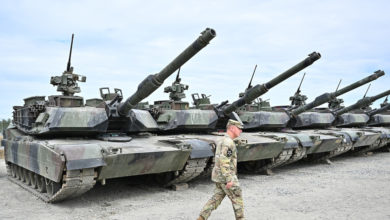The Complicated Ethics of Writing Violence in Fiction

The writing of crime fiction raises some serious ethical concerns.
The most challenging for me is the one about how to depict violence.
Do you need to show it all, for one?
If so, what can you do to make it moral?
This is a problem I struggle with all the time. It’s a fine line to walk. On the one hand I don’t want to sanitize violence—I don’t like presenting murder as a parlor game, or worse, a video game in which there are no real consequences. On the other hand, I don’t want to cross that thin line into what might be called the pornography of violence, a means to merely titillate the worst angels of our nature.
We have to face it.
We write, after all. crimeCrime often involves violence in fiction. So either we choose crimes that don’t—the slick, bloodless heist, the clever con game—or we write scenes that involve shootings, stabbings and various kinds of murder.
And maybe that’s the answer—maybe we have come to a time when we should stop writing violent crime altogether. If we choose to make this choice, then we can say good-bye to murder mysteries, procedurals, and forensic novels.
And maybe I’m wrong about not sanitizing the violence. It is possible to have a cleverly plotted and suspenseful story with its quirky dialogue, exotic locales and interesting characters. (Who are you to judge?) It’s fine, as long as we know it’s a game and we play by its rules and know its conventions. So if Colonel Someone kills Lord Someone Else in the study with a monkey wrench, we don’t expect to see the blood and brains and we don’t feel much from the grieving family except anticipation of the will.
It’s fair enough I guess.
However, my crime fiction is real.
Over the course of 23 years I have written novels about Mexican drug cartels. There was so much violence that I could not bear to see. So I faced a difficult decision. Do I soften, muffle, reduce it or present it to readers in a realistic, graphic way?
I chose, for the most part the last option.
It was difficult to make a decision.
Researching these events was an incredibly painful experience. I also knew it would be difficult to read about them in this way. Every violent event in the books was actually a part of something else.I was trying to convey the true tragedy of so-called War on Drugs to the reader. I also wanted them to experience the pain of those involved and to see the effects of violence.
If you’ve ever seen a gunshot wound, ever talked the family of a murder victim, ever gone to the funeral, you there is nothing sanitized or antiseptic about violence.
The ballet is not as beautiful and slow-motion as the ones seen in other films.
It’s ugly and it’s dirty.
Is that to say that the reader should be burdened with all this?
Not necessarily. Many readers of crime fiction go to books for an escape from reality, and there’s nothing wrong with that. It’s a legitimate choice on both the writers and reader’s part. I’ve made that choice myself, in pieces that were never meant to depict real events.
Writing realistic books about drug cartels was a new responsibility for me. I wanted to get behind the headlines, to bring the reader into a close relationship with individuals instead of stereotypes, so that when one of them was killed – as so many were – the reader felt something.
But the question still remained—how far do you take it, how graphic do you want to be, where is that thin line?
It was not always easy. There were certain incidents during drug wars. It was a fact that I had known.These were almost surreal. I didn’t think the reader would even believe them. But, in all candor, the larger reason I didn’t was that just couldn’t bring myself to write them. I just couldn’t do it to the reader—or to myself.
Is that in violation of my desire for readers to experience the effects of drug wars? Yes, I suppose so, but at some point, enough is enough—how much pain do you want to inflict?
It’s not that important.
There is also the real danger of inuring the reader to violence, by repetition or escalation desensitizing the reader – the actual opposite of what I intended.
It can happen—researching those books I often spent days looking at atrocity photos and videos. The first one I saw was sickening, the thirtieth…was just depressing. It was my best effort, and it is the only way I can do not become a voyeur. It was a difficult ethical problem to communicate those images accurately, realistically, and without appearing obscene. It was a difficult decision to make. I finally decided to do it because the truth is the truth, and everyone should know it.
Let me know if I am wrong.
Around halfway through my second book I discovered the phenomenon of the desensitizing of readers. The CartelThis depicted a very violent period. In order to stop depicting actual violence I had to create a character who would react and come on the scene. It allowed me to understand the psychological and emotional effects of violence. This was a great way to get the most important information. I think it also made it easier for the reader to relate in real human terms—we can all understand grief, revulsion and anger.
While there were times where the story demanded that I wrote the violence, I began to write more about the funeral and wake. I also started writing the emotions of survivors. These effects have been ongoing over many years. Maybe I’ve just softened over time myself, I don’t know.
I do know that when I was on tour for those drug books, there was not a single event at which someone didn’t come up to me who had lost a relative, a loved one, a friend in the drug wars. Or someone’s who had lost someone to an overdose. Many people asked me if they could share something about their missing loved ones. This is when you realize how much you have to give back, no matter what the circumstances.
As I realized that I couldn’t be too realistic in my writing of violence, I had to be more cautious about it.
Perhaps our moral responsibility is to show the Resultsviolence and real human pain for victims and loved ones. Spending time with police officers, I wrote a book entitled The Force, I learned, for instance, that a homicide detective’s primary relationship in a crime is not with the criminal but with the victim and the surviving family, and that they feel it intently and forever. As a former detective, I watched as tears rolled down his cheeks while he spoke about the murder of a child thirty years earlier.
I didn’t write about that murder. Couldn’t do it—not to myself, the reader, that detective, or that child. It was written by me Around it, in an elliptical reference to a police officer’s past and what haunted him.
This felt right, and fair.
It was human emotion that I wanted to express, and I believe it worked. It was important for the reader to get the meaning of the cop.
And maybe that’s our guide. We might have to Please feelWe can find the most appropriate approach to each situation by consulting our humanity.
Again, it’s hard not to cross that invisible line.
In order to better describe violence, I am finding that I can use fewer words. To this end, I make smaller images to stand in for larger ones. Symbolic ones are for the graphic. In the memory of violent events, I tend to cut more and add more lyrics.
I’m still realistic, but perhaps in a different way.
What ethical way can we portray violence in crime fiction?
I wish I had all the answers, but I certainly don’t. One answer might be that we only write what is important and make sure we have the consequences. Maybe it’s just a matter of being human and sensitive to other people’s emotions, feelings, and experiences.
And maybe that’s what being ethical is.
Read More From Time





